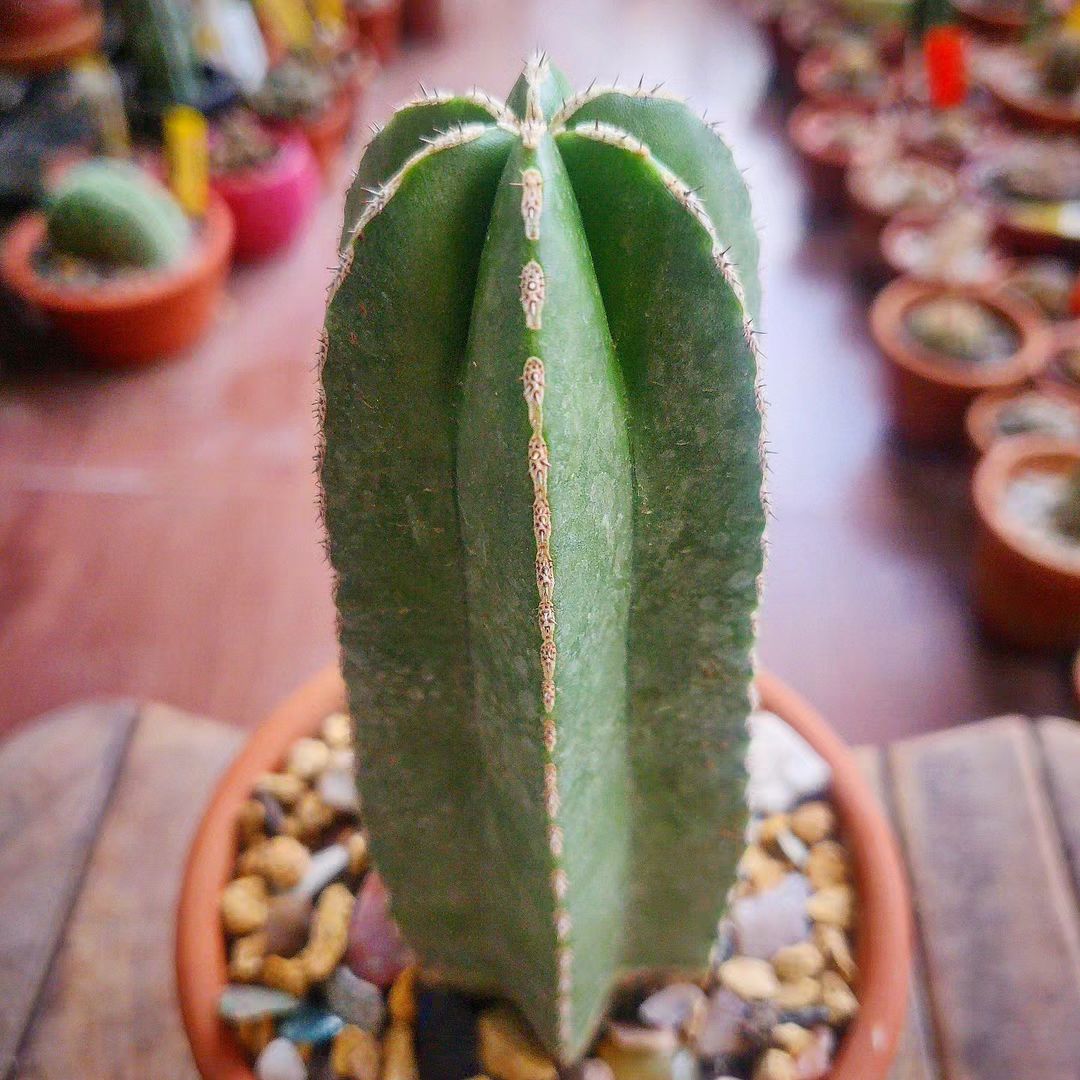Do you know Cactus without spines also exist? There are wonderful varieties of spineless Cactus that have many decorative uses.
Let’s see some of the varieties of spineless Cactus and learn the ways to care for them from the article below!
Table of Contents Show
What Are Cactus Without Spines?
Spineless Cacti are those that don’t have any spines on them.
Commonly, Spineless Cacti are also called “Nopales” and are native to regions of America (North to South).
These Cacti grow in various habitats, such as grasslands, forests, and deserts.
Do You Know?
Cacti have spines for 3 reasons.
These spines protect Cacti from predators, allow seed dispersal and help reduce water loss in arid environments.
Since most Spineless Cacti grow in moist environments with fewer natural predators, they don’t bear spines.
Besides, due to the absence of spines, these Cacti can be used for several purposes and have several benefits.
- Spineless Cacti are edible and a good source of vitamins and minerals.
- Since Spineless Cacti have arid adaptation, you can also grow them in dry climatic zones.
- Many Spineless Cacti are disease and pest tolerant.
- Easy to care for, Spineless Cacti can grow in planters and directly in the soil.
Top 10 Popular Varieties Of Cactus Without Spines
Some of the best Spineless Cactus for indoor decor include.
1. Pincushion Cactus
Where To Buy? Available on Amazon
Pincushion Cactus (Mammilaria elongata) have hairy bodies covered with soft spines, making them a safe choice for pets and children.
They can grow 6-12 inches tall and about 4-6 inches wide.
2. Bunny Ear Cactus
Where To Buy? Available on Amazon
Bunny Ear Cacti (Opuntia microdasys) have paddle-like soft appendages atop that resemble bunny ears and are covered in soft, white spines.
In size, Bunny Ear Cacti can grow 2-3 feet tall and 4-6 feet wide.

3. Peyote Cactus
Where To Buy? Available on Precious Cactus
Peyote (Lophophora williamsii) is a small button-shaped Cactus without spines. The Cactus bears white or pink flowers in spring.
The plants grow about 2-3 inches in diameter and have a psychoactive compound called mescaline.
4. Rebutia Cactus
Where To Buy? Available on Amazon
Rebutia Cactus (Rebutia heliosa) can grow 2-3 inches in diameter and have round bodies with creamy pink flowers.
With soft and whitish-gray spines, they look like fluffy hairballs.
5. Bishop’s Caps
Where To Buy? Available on Amazon
Bishop’s Cap Cactus (Astriophytum myriostigma) come without spines and are star-shaped with short bodies.
The ridges on the side of the Cactus are spotted with white dots and grow to about 4-40 inches tall.
6. Christmas Cactus
Where To Buy? Available on Amazon
Christmas Cactus varieties are spineless, have segmented green and flat stems that look like stems, and bear vibrant flowers in fall and winter.
They (Schlumbergera bridgesii) are epiphytes, getting around 6-12 inches tall and wide.

7. Moon Cactus
Where To Buy? Available on Amazon
Moon Cactus (Gymnocalycium mihanovichii) are grafted varieties of Dragon Fruit Cactus with soft spines and brilliant flowers.
Individual Moon Cactus can grow about 2-4 inches tall and with equal width.
8. Mexican Fence Post Cactus
Where To Buy? Available on Amazon
Mexican Fence Post Cactus (Pachycereus marginatus) is a variety without spines and grows tall, reaching heights of 10-20 feet tall.
The plant bears white or pink flowers during spring and has the ability to grow in outdoor conditions.
9. Mistletoe Cactus
Where To Buy? Available on Amazon
Mistle Toe Cactus (Rhipsalis baccifera) are epiphytic without spines and have a trailing habit.
They are great for hanging baskets and can grow shaggy stems that drape anywhere between 6 and 30 feet.

10. Dancing Bones
Where To Buy? Available on Amazon
Dancing Bone Cactus (Hatiora species) are available without spines and have unusually partitioned stems.
They can grow to a length of 20 inches with fragile stems and don’t have leaves.
Care & Maintenence For Cactus Without Spines
Although Cactus is a hardy plant, they need all the basic care requirements for growth.
- Sunlight: 6 hours of direct sunlight from the south or west-facing window.
- Watering: Weekly (spring and summer) & Monthly (fall and winter).
- Soil: Well-draining & Porous (equal parts of potting soil, sand, and organic perlite).
- Fertilizer: Once or Twice a year (late spring or early summer).
- Humidity: 40-60% (at all times).
- Temperature: 70-95°F (at all times).
- Pruning: To remove the dead or decaying stems or spines (summer).
- Repotting: Every 2-3 years in late spring or early summer (terracotta planter 1-2 larger than previous).
From Editorial Team
Conclusion!
Spineless Cactus are pet and children-safe. Although some may bear spines, they are soft and without any hazards.
However, many are poisonous and should not be handled without care!


